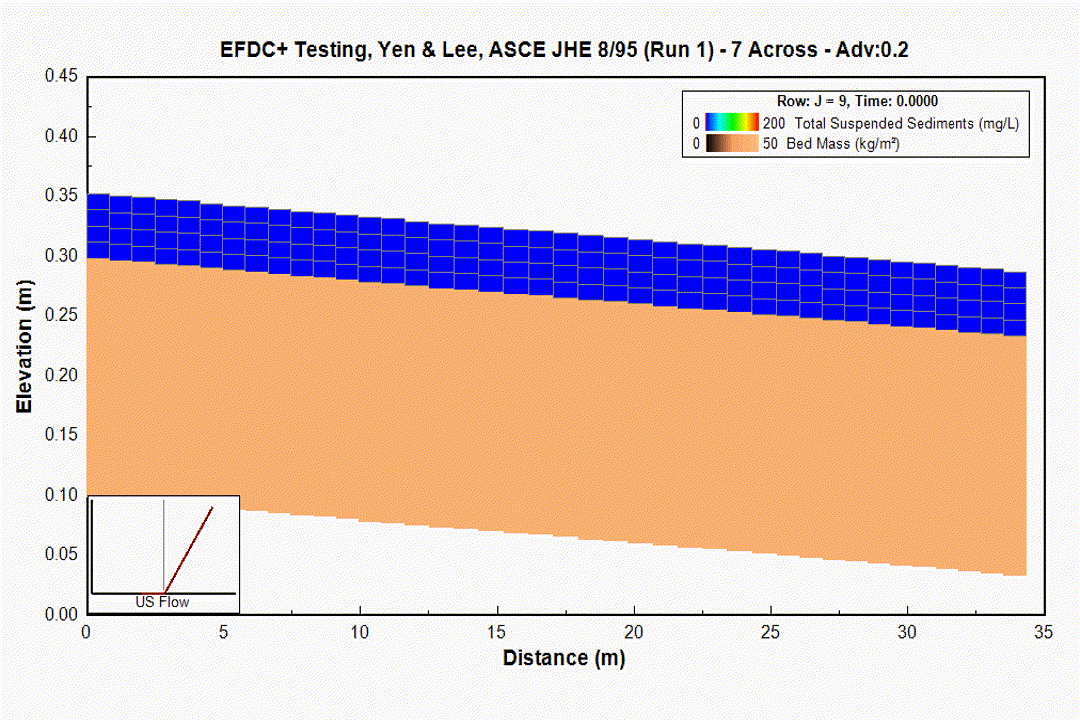Cohesive and/or Non-Cohesive Sediment Classes
EFDC+ can simulate the transport and fate of any number of size classes of cohesive and non-cohesive sediment, non-cohesive bedload, and bed scour, deposition, and resuspension. This flexibility allows you to address systems sediment transport issues ranging from simple to complex.
Bed Processes
Using EFDC+, you can represent the sediment bed by a single layer or multiple layers. The multiple-bed layer option provides the ability to establish a time-since-deposition position versus vertical position in the bed relationship. You can also simulate bed armoring, providing important insights into the nature of erosion and deposition in your system.

